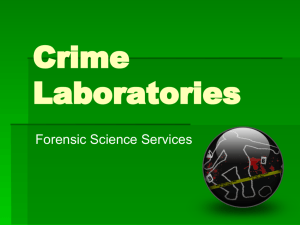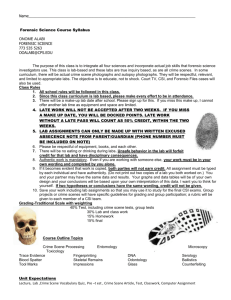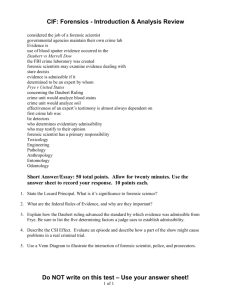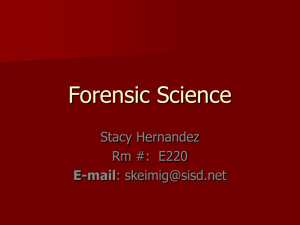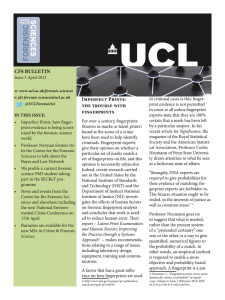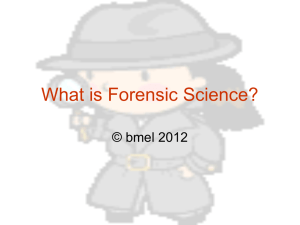Crime Laboratories
advertisement
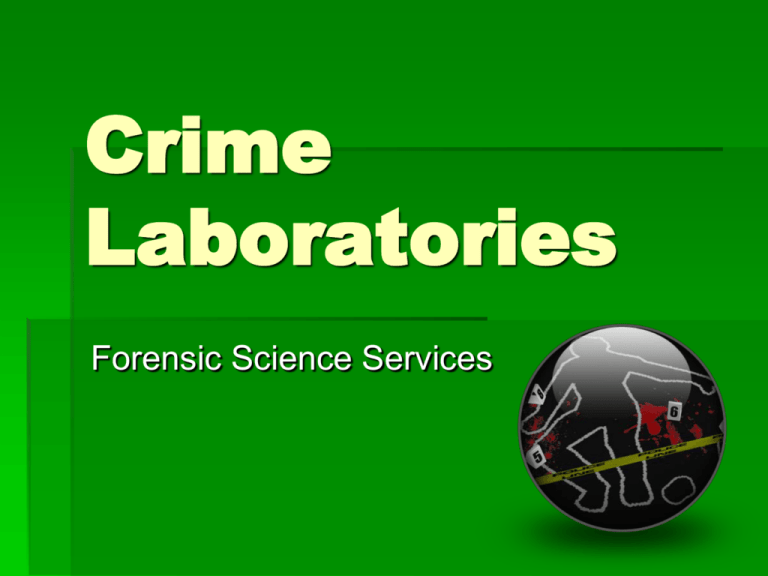
Crime Laboratories Forensic Science Services Objectives List and describe the functions of the various units found in a modern allpurpose crime lab. ( DOK 1) Crime Labs in the U.S. Wide Variation in services offered, for reasons including: Local laws Functions of the organization to which the lab is attached Budgetary and staffing limitations Crime Labs in the U.S. Crime Labs can include: Physical Science Unit Biology Unit Firearms Unit Document Examination Unit Photography Unit Toxicology Unit Latent Fingerprint Unit Voice Analysis Unit Crime Scene Investigation Unit Crime Labs in the U.S. Other Forensic Science Services: Forensic Pathology Forensic Anthropology Forensic Entomology Forensic Psychiatry Forensic Odontology Forensic Engineering Forensic Computer and Digital Analysis Physical Science Unit Applies techniques of chemistry, physics, and geology to crime scene examination Glass Paint Explosives Soil Biology Unit DNA profiling Blood stains and body fluids Hair and fiber analysis Compare botanical materials such as wood and plants Firearms Unit Firearms Discharged bullets Cartridge cases Shotgun shells Other ammunition Garments: examined for firearm discharge residues Tool marks Document Examination Unit Examining handwriting and typewriting Paper and ink analysis Indented writings, erasures Burned or charred documents Photography Unit Examines and records physical evidence This may include digital, infrared, UV, and Xray imaging Prepares photographic exhibits for courtroom presentation Toxicology Unit Examines body fluids and organs for presence or absence of drugs and poisons Often such functions are in a separate lab under the direction of the medical examiner or coroner’s office Fingerprint Unit Develop latent fingerprints May take fingerprints of suspects, persons of interest Analyze fingerprint ridge characteristics Other Services Polygraph A tool of the criminal investigator rather than the forensic scientist Voiceprint Analysis Telephoned threats, tape-recorded messages, etc. Not always considered a valid means of identification. Crime-scene Investigation Unit This is often under the jurisdiction of the law enforcement agency. This unit dispatches specially trained personnel (police and/or civilian) to the crime scene to collect and preserve physical evidence for later lab analysis. Working Together…

